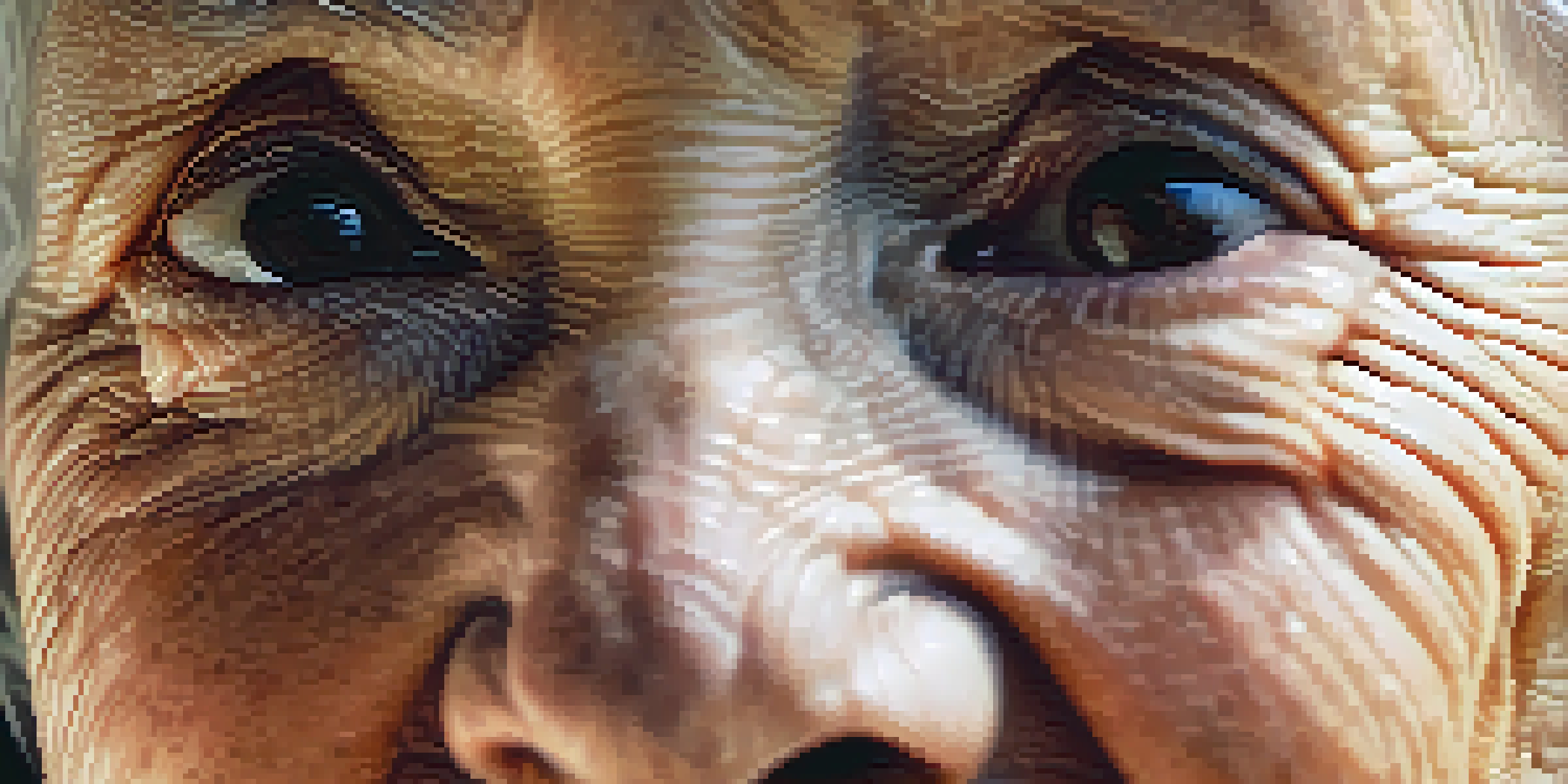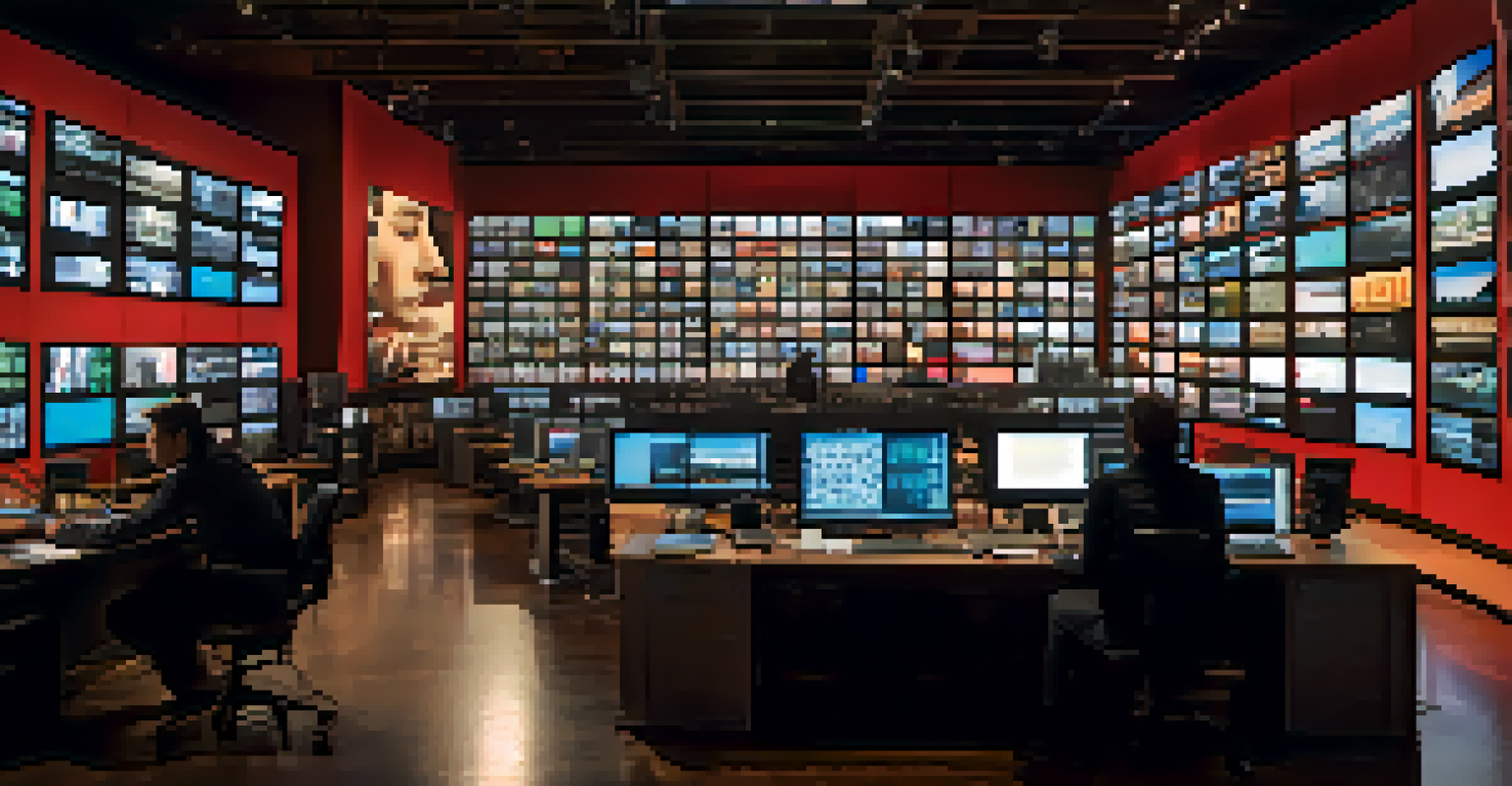Cinematic Techniques: How Documentaries Create Emotion

Understanding the Power of Storytelling in Documentaries
At the heart of every compelling documentary lies a powerful story. Documentaries often present real-life events or personal journeys, creating a narrative that captures the audience's attention. This storytelling aspect invites viewers to connect with the characters and the situations they face, making the experience deeply personal.
Documentaries are the ultimate form of storytelling, turning real-life events into narratives that captivate and inspire.
By focusing on authentic stories, documentarians can evoke empathy and understanding. For example, a documentary about a community facing climate change allows viewers to witness the struggle and resilience of those affected, fostering a sense of solidarity. This emotional connection is vital, as it encourages audiences to reflect on their own lives and the world around them.
In essence, storytelling in documentaries is not just about conveying facts; it's about shaping emotions that resonate with viewers. When done effectively, these narratives become a catalyst for change, inspiring viewers to take action or reconsider their viewpoints.
Cinematography: Crafting Visual Emotion
Cinematography plays a crucial role in how documentaries create emotional impact. The choice of camera angles, lighting, and framing can significantly influence how viewers perceive a scene. For instance, close-up shots of a subject's face can capture the subtleties of their emotions, drawing the audience into their experience.

Moreover, the use of lighting can set the mood for a particular moment. Dark, shadowy lighting might evoke feelings of sadness or fear, while bright, natural light can suggest hope and positivity. This visual storytelling enhances the narrative and allows viewers to feel the intended emotions more deeply.
Storytelling Connects Audiences
Authentic narratives in documentaries foster empathy, encouraging viewers to reflect on their own lives and the world around them.
Ultimately, effective cinematography is about more than just pretty pictures; it's about using visual elements to evoke feelings that align with the documentary's message. This technique allows filmmakers to create lasting impressions in the minds of their audience.
Sound Design: The Emotional Soundtrack
Sound design is another powerful tool that documentaries use to evoke emotion. The combination of music, ambient sounds, and voiceovers can dramatically enhance the emotional experience of a film. A well-chosen soundtrack can stir feelings of nostalgia, sadness, or joy, guiding the viewer's emotional journey.
The best documentaries show us the world as it is, but they also inspire us to imagine the world as it could be.
For example, a poignant score can elevate a scene, making it feel more impactful. When viewers hear a soft piano melody accompanying a touching moment, they are more likely to feel a surge of emotion. This synergy between sound and visuals creates a richer, immersive experience.
Furthermore, sound can be used to convey the atmosphere of a setting or situation. The sounds of bustling city life, birds chirping in a serene landscape, or even silence in a tense moment can all evoke specific feelings, making the narrative more relatable and engaging.
Interviews: Creating Personal Connections
Interviews are a staple in documentary filmmaking, providing a direct connection between the audience and the subjects. When viewers hear firsthand accounts from individuals, the emotional weight of their experiences often resonates deeply. This personal connection can lead to a greater understanding of complex issues.
For instance, a documentary that features interviews with survivors of a natural disaster invites viewers to empathize with their struggles and triumphs. By sharing their stories, these individuals become relatable, humanizing the larger narrative and fostering a sense of compassion.
Cinematography Evokes Emotion
Effective use of camera angles and lighting in documentaries enhances the emotional impact, allowing viewers to feel the intended sentiments more deeply.
Moreover, the way interviews are conducted can also influence emotional engagement. Thoughtful questions and genuine responses create an intimate atmosphere, allowing the audience to feel as though they are part of the conversation. This authenticity is what keeps viewers invested in the story.
Editing: Building Tension and Release
Editing is a fundamental aspect of documentary filmmaking that can manipulate time and emotion. The pacing of scenes, the rhythm of cuts, and the juxtaposition of images all work together to create tension or relief. An expertly edited documentary can take viewers on a rollercoaster of emotions, from moments of despair to bursts of joy.
For example, a documentary might cut between scenes of hardship and scenes of triumph, emphasizing the struggle and resilience of the subjects. This contrast allows viewers to experience a cathartic release, making the emotional journey more impactful.
Additionally, the strategic use of pauses or slow-motion can heighten the emotional stakes. When a poignant moment is given time to breathe, viewers can fully absorb its significance, leading to a deeper emotional response.
Archival Footage: Tapping into Collective Memory
Incorporating archival footage can evoke powerful emotions by connecting viewers to historical events or shared memories. This technique not only provides context but also creates a sense of nostalgia. When audiences see familiar images from the past, it can stir feelings of remembrance and reflection.
For example, a documentary about social movements might include footage from pivotal protests, allowing viewers to witness the struggles and victories of those who came before. This connection to history can evoke pride, sadness, or inspiration, depending on the narrative.
Interviews Create Personal Bonds
Thoughtful interviews provide a direct connection to subjects, humanizing complex issues and fostering greater understanding among viewers.
Moreover, archival footage helps to ground the documentary in reality, reinforcing the authenticity of the story being told. By blending past and present, filmmakers can create a poignant emotional landscape that resonates with audiences on multiple levels.
Narrative Structure: Guiding the Emotional Arc
The narrative structure of a documentary is crucial in guiding the emotional journey of viewers. A well-structured film takes the audience through a clear progression of events, building tension and releasing it at key moments. This emotional arc keeps viewers engaged and invested in the outcome.
For instance, a documentary might start by introducing a problem, then explore the challenges faced by the subjects, and finally culminate in a resolution or call to action. This journey mirrors the structure of classic storytelling, making it relatable and compelling.

By carefully crafting the narrative flow, filmmakers can elicit specific emotional responses at different stages. This deliberate pacing allows viewers to experience a range of feelings, from curiosity and concern to hope and determination, making the documentary memorable and impactful.